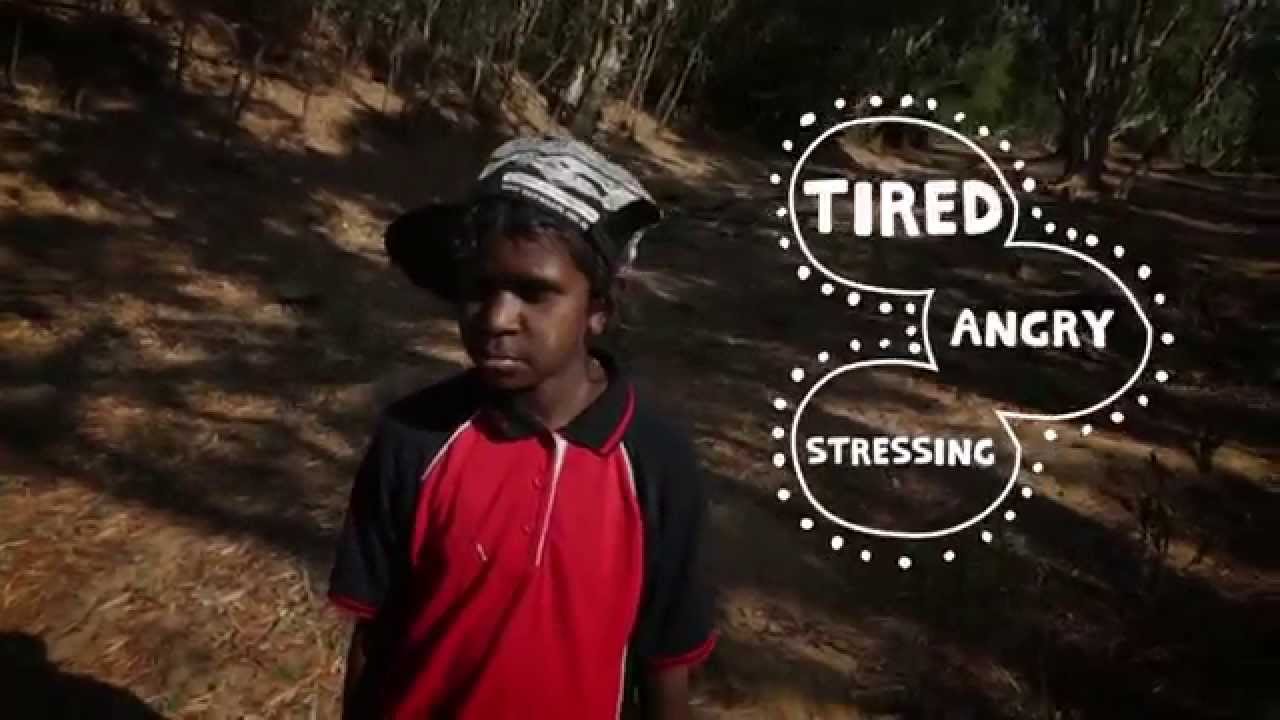Yarn it out!.... When we've got a lot going on we can feel sad, tired, stressed and angry. Everybody has these feelings when life is tough, but when these feelings go on for a long time it can weaken our body, mind and spirit. If you feel like there is too much happening, clearing your head can help.
Scroll down to the bottom of this page to download some useful information sheets that provide tips and advice for when you're struggling or down, or need some help.
In early 2014, headspace Collingwood put in a strategy aimed at increasing Indigenous engagement through developing relationships with local Aboriginal and Torres Strait Islander services. Part of this strategy was the creation of an Aboriginal and Torres Strait Islander support worker role to strengthen ties with community.
Headspace Collingwood's Aboriginal and Torres Strait Islander clinician, Mannon Johnston (Waka Waka/Gunai Kurnai) sat down with Deadly Story to talk about the work that headspace does in providing a culturally safe space for Aboriginal and Torres Strait Islander youth to 'Yarn it out'.
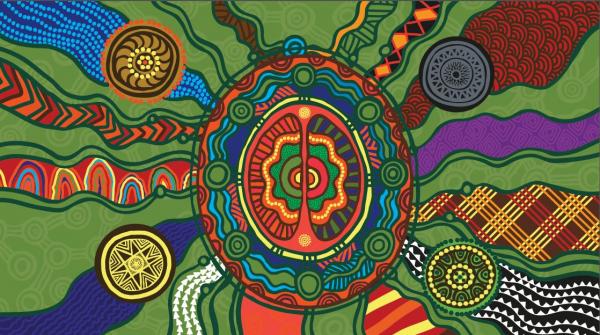
The headspace Story - created by artist Riki Salam
NOTE: The opinions expressed below are those of Mannon Johnston and not necessarily headspace's.
 My name is Mannon Johnston (Waka Waka/Gunai Kurnai). I am headspace Collingwood’s Aboriginal and Torres Strait Islander Clinician. I work predominantly with our Indigenous young people that present at headspace Collingwood. I also work in an outreach capacity with government, schools, community organisations and am involved with the ‘Collingwood Knights’, a community sporting football team.
My name is Mannon Johnston (Waka Waka/Gunai Kurnai). I am headspace Collingwood’s Aboriginal and Torres Strait Islander Clinician. I work predominantly with our Indigenous young people that present at headspace Collingwood. I also work in an outreach capacity with government, schools, community organisations and am involved with the ‘Collingwood Knights’, a community sporting football team.
1. What is headspace and the work that they do?
Headspace works nationally; it aims to be a one stop shop for young people who need help with their mental and physical health, alcohol and drugs, and even work and study. There is a variety of supports available at headspace with one of them being an on-site General Practitioner.
There are over a hundred headspace centres across Australia with each centre providing tailored support to meet the specific needs of the local community. For example, the headspace centre in Collingwood has a dedicated position supporting Aboriginal and Torres Strait Islander young people in addressing the direct needs of the local community (hence my position here).
Every headspace centre has their core elements that are consistent across the country, but each centre is able to specialise and design programs around their community’s needs. The young people within a given community are also actively involved, so through our Youth Advisory Committee (YAC), they have a direct say in what their local centre is doing. This is crucially important if we want to get an understanding of what our young people want.
The young people are actively involved... they have a direct say in what their local centre is doing... this is crucial if we want to get an understanding of what our young people want.
2. What is ‘Yarn Safe’ and how is this related to headspace?
Yarn Safe was a campaign designed around promoting mental health, having a yarn and talking about issues that the Aboriginal and Torres Strait Islander community face. Whilst also creating awareness within the community, it was also designed for headspace staff and people within headspace to become more culturally competent and to better understand the needs of the Aboriginal and Torres Strait Islander community.
Headspace Collingwood did find it made a difference in Aboriginal and Torres Strait Islander Youth in terms of accessing the service and wanting to get involved; which was one of the main goals of the campaign.

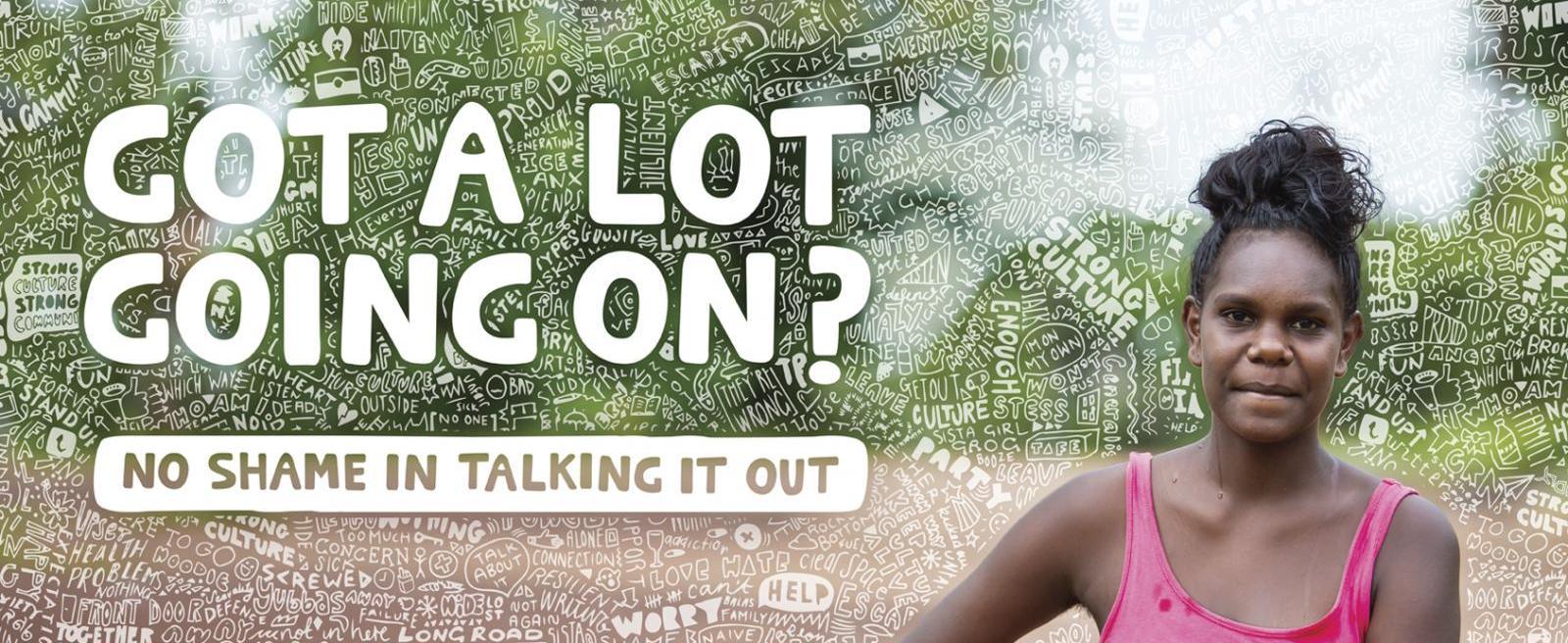
Source: Gilimbaa headspace campaign
3. Why was this campaign setup?
In a broader sense, the campaign was set up because Aboriginal and Torres Strait Islander young people had higher recorded rates of mental health issues, and as the National Youth Mental Health Foundation, headspace had an important part to play in promoting a culturally safe and inviting place for Aboriginal and Torres Strait Islander young people to come in and be involved.
It is important to recognize that there are other Aboriginal controlled organisations that offer a similar service, but sometimes giving young people options in terms of accessing culturally safe organisations is an important part of what headspace can offer.
4. What are some of the pressures and challenges that young Aboriginal and Torres Strait Islander young people may face compared with non-Aboriginal youth?
Firstly it is important to recognise that there any many similar issues that both Aboriginal and non-Aboriginal young people face, but in saying that, for our Aboriginal and Torres Strait Islander young people, there are other layers that need to be considered.
I can only really speak from the perspective of my work and young people I’ve seen; racism, stereotyping and subtle displays of prejudice remain prominent and can be very confusing for our young people as they struggle to understand why this takes place. Another important layer is the clash of cultures where a lot of our young people are not use to, or have not grown up in a very non-indigenous culture and environment – the example I use is school and the lack of flexibility within schools to cater for a young person’s cultural needs. I think a lot of young people struggle with that but it is great that they acknowledge and recognise the struggles that they are having.
Racism, stereotyping and subtle displays of prejudice remain prominent and can be very confusing for our young people as they struggle to understand why this takes place.
Another source of stress for our young people is the pressure they feel within themselves and the pressure that can come from others. They often feel like that they have to achieve a lot or if something is not going well, it is then all on their shoulders. So part of my work is to help them understand that there may be elements that they can not control, and to then look at the issues going on and how we can solve them.
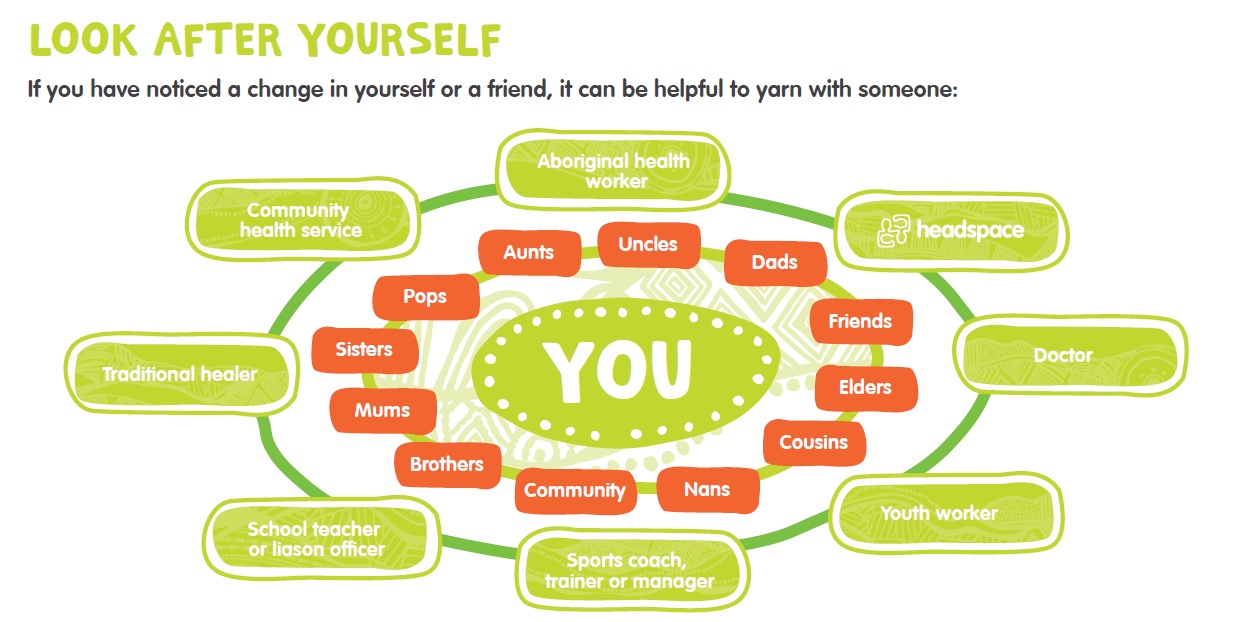
5. What are some of the practical things that young Aboriginal and Torres Strait Islander people can do during times of stress and emotional difficulty?
In our work, we are really big on young people acknowledging and understanding their positive connections in their life and where they may be; whether that be school, friends, family, sport, or other social circles – acknowledging these connections and seeking them out during times of stress and difficulty, allows an opportunity for that young person to really open up and express their feelings and thoughts. In encouraging the young person to be more open about how they are feeling and to talk about what is going on (as oppose to holding it in), it allows them to see the issue with a bit of perspective and approach it with a different mindset.
We are really big on young people acknowledging and understanding their positive connections in their life.
Sometimes it is not always possible for a young person to go to other people to talk about their issues, so then it becomes important to develop self-care strategies that the young person can employ themselves. These could include; listening to music, doing some form of meditation (using the many available smartphone apps to help this), going for a walk, doing exercise, playing sport, or connecting with their culture and country. It is also being aware of events taking place within the community and spending time with people they feel comfortable with and connected to.
There are a few layers to this; some measures are very small and can be done on a day-to-day basis, whilst sometimes putting the effort to plan a trip to go back home or to country and spending some time with people you trust, can make all the difference – this depends largely on the individual. A lot of the time, we always try and advocate for that young person to have a trusted person in their life that they can turn too, whether that be an Aunt or Uncle, a family member, a councillor, or even a service – basically anyone who is really strong in understanding who that person is and having that ability to turn to them to foster that positive connection because all too often, people look to negative outlets to deal with their stress and frustrations. So it really comes down to identifying and understanding these positive connections and seeking them out.
This hip hop video, written and performed by the young people, captures a range of issues including racism, stress, drugs and isolation, but stresses there is 'no shame in talking it out'.
6. What are the cultural stigmas attached with talking about one’s issues and problems, especially within Aboriginal and Torres Strait Islander culture?
One unfortunate part of our culture that has been there a long time is the idea of ‘shame’. The ‘Shame-factor’ relates to if something is not going well; you are worried what other people are going to think so you do not want to talk about it because it then brings shame to both me and my family – this is a large component of what that cultural stigma is and what that idea of shame is.
You are worried what other people are going to think so you do not want to talk about it because it then brings shame to both me and my family – this is a large component of what that cultural stigma is and what that idea of shame is.
The idea of shame and the cultural stigma that is attached to it is still there but I do think that is evolving. Nowadays young Aboriginal and Torres Strait Islander people are more open to expressing what’s going on. There is a growing confidence in our young people that whatever is said in confidence, will be treated professionally and remain private. There is still a long way to go in terms of shifting that cultural stigma, but campaigns like ‘YarnSafe’ encourage that conversation and let people know that it is okay to have a yarn and get it out, as oppose to holding it in and letting it bubble away under the surface.
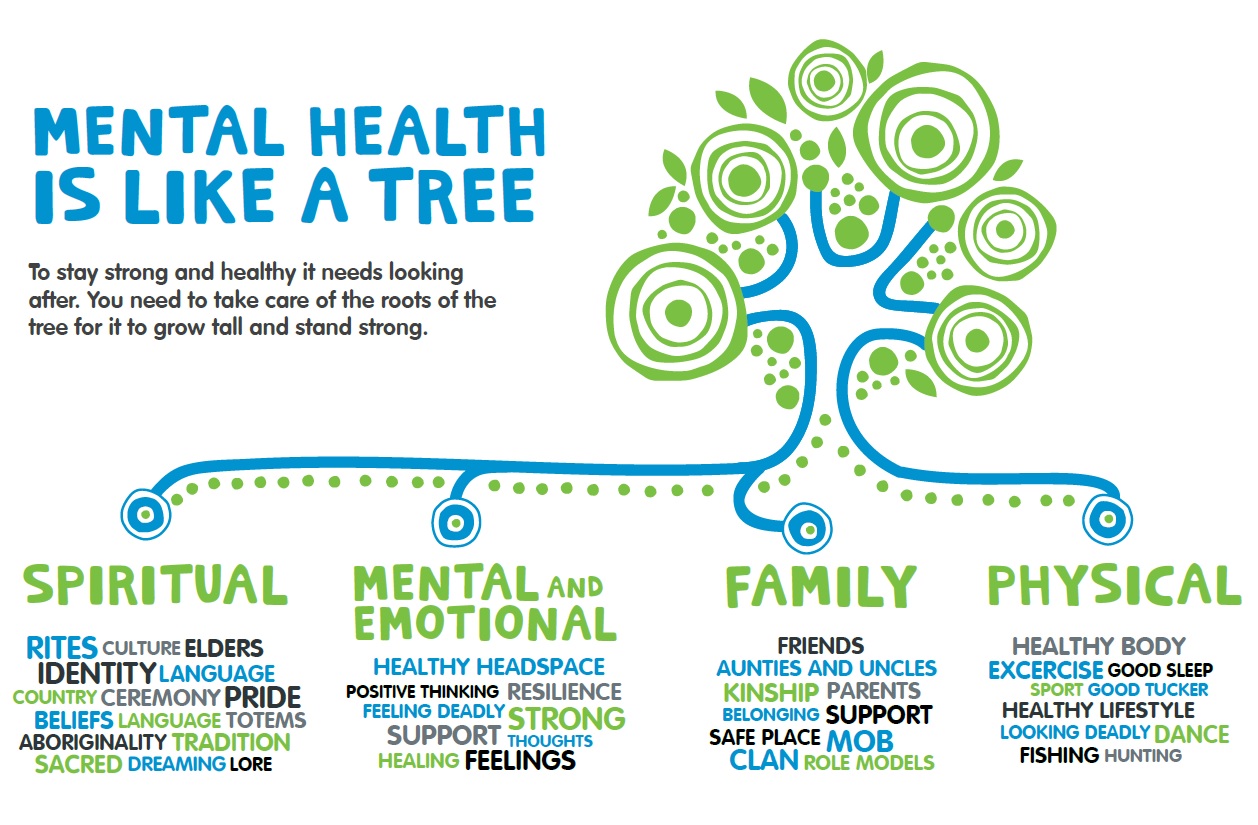
Adapted from Menzies School of Health Research - Aboriginal and Islander Mental Health Initiative (headspace)
7. What are some of the practical pieces of advice you can give to your callers and young people?
This depends on what that young person is going through, but there are options and things that a young person can do for and within themselves; and also externally with someone else (i.e. speaking with someone). Ultimately it comes back to self-care and being aware of what works for that person, because what works for one person, may not work for another.
As previously mentioned, it could be playing computers games for an hour, meditating, reading, listening to music, connecting with trusted friends, family and other community members; all of which provide a bit of distraction from what might be going on for that person.
It is crucially important to address what’s actually going on
In saying that, it is crucially important to address what is actually going on because if that person is struggling, there is obviously something bigger going on for them. Self-care and seeking support externally from family or friends will address the issue for a period of time, however longer terms solutions need to be found through proper engagement with relevant support services. It could be your GP, or school welfare, an Aboriginal service or another expert. At the end of the day, my role is to provide options and enable that person to make a decision for what’s best for them.
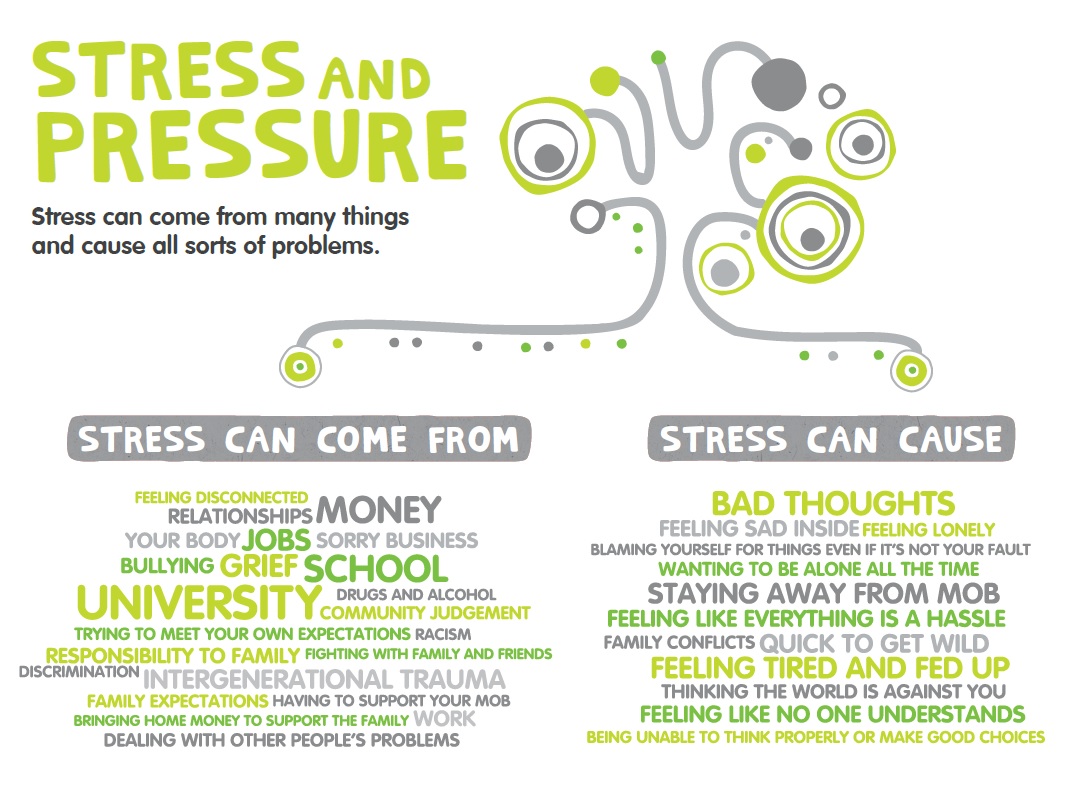
8. What advice can you give to non-Aboriginal carers who are looking after Aboriginal children when it comes to helping them with any personal issues that they may have?
It is a broad and difficult question that a lot of people have tried to answer. From what I have seen and experienced, the key is really getting to know that young person and establishing a relationship where you can be a person of connection for them, to open up and express how they are going and what is happening. It is not always going to be easy, it takes time to build that trust and rapport, it is important for non-Aboriginal carers to know the broader cultural perspective of that young person; where are they from? What connections do they have? What is their involvement with their cultural identity? That is a large component of an Aboriginal or Torres Strait Islander young person and often if they are living with a non-Aboriginal carer, there may be an element of confusion, or maybe their identity may not be as strong as they want, so it is really important to support that.
The key is really getting to know that young person and establishing a relationship where you can be a person of connection for them.
At the same time I think that as a non-Aboriginal carer, you cannot be expected to know everything or be able to assist with everything, so understanding what is out there within community and the supports that can be sought is also crucial. There are a lot of services designed for this particular reason – supports for carers and supports for children and young people; so get to know them. Most services will take a phone call from a carer and say ‘yes headspace may be 12-25s’, but if a carer calls here and says ‘look I’ve got my young person, what do you think?’, most services are going to be really happy to have that conversation and to help that carer out because at the end of the day, it is about what is best for that young person. So getting to know that young person, getting to know where they are from and their identity, and also how to support them are crucial.

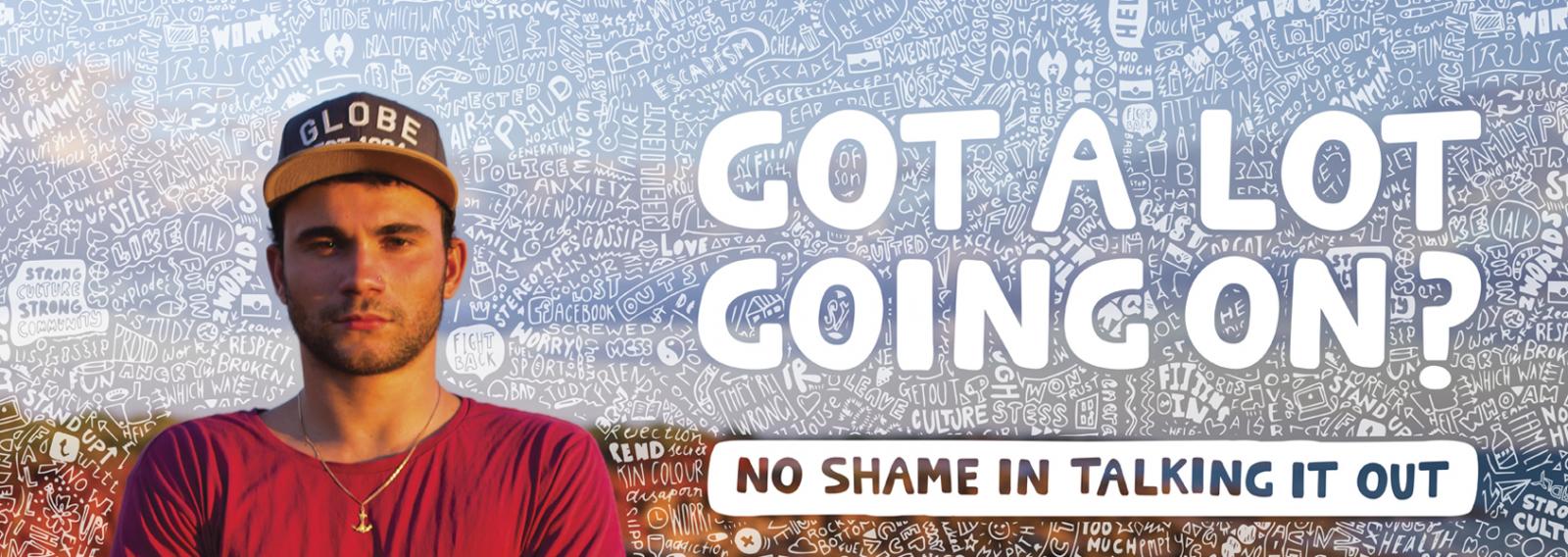
Seeking Help
Headspace National Office: (03) 9027 0100
Lifeline Australia: 13 11 14
Kids Helpline: 1800 55 1800
Remember, there is no shame in talking it out, start by reaching out to your contacts, your family, your friends, your community or the numbers listed above - there is always someone ready to listen.
Below are some downloadable information sheets to help you through any problems you may be having.
Yarn safe & stay strong!
-
Mental health is like a tree
To stay strong and healthy it needs looking after. You need to take care of the roots of the tree for it to grow tall and stand strong.Download
-
Alcohol and Drugs
Drugs and alcohol can make you feel go od for a little while, but in the long run will make you feel much worse. Drugs and alcohol can also weaken your spirit and your connection with family, community and culture.Download
-
Stress and Pressure
Find good ways to cope when feeling stressed out and show your mob that it’s ok to yarn to someone when you have lots of stress and pressure. There’s no shame in talking it out.Download
-
Strong and healthy relationships
Good relationships can make you feel happy and confident. They can help get you through tough times. It’s deadly to share, care, laugh and love with your mob and bond over culture, community, kinship and family.Download

